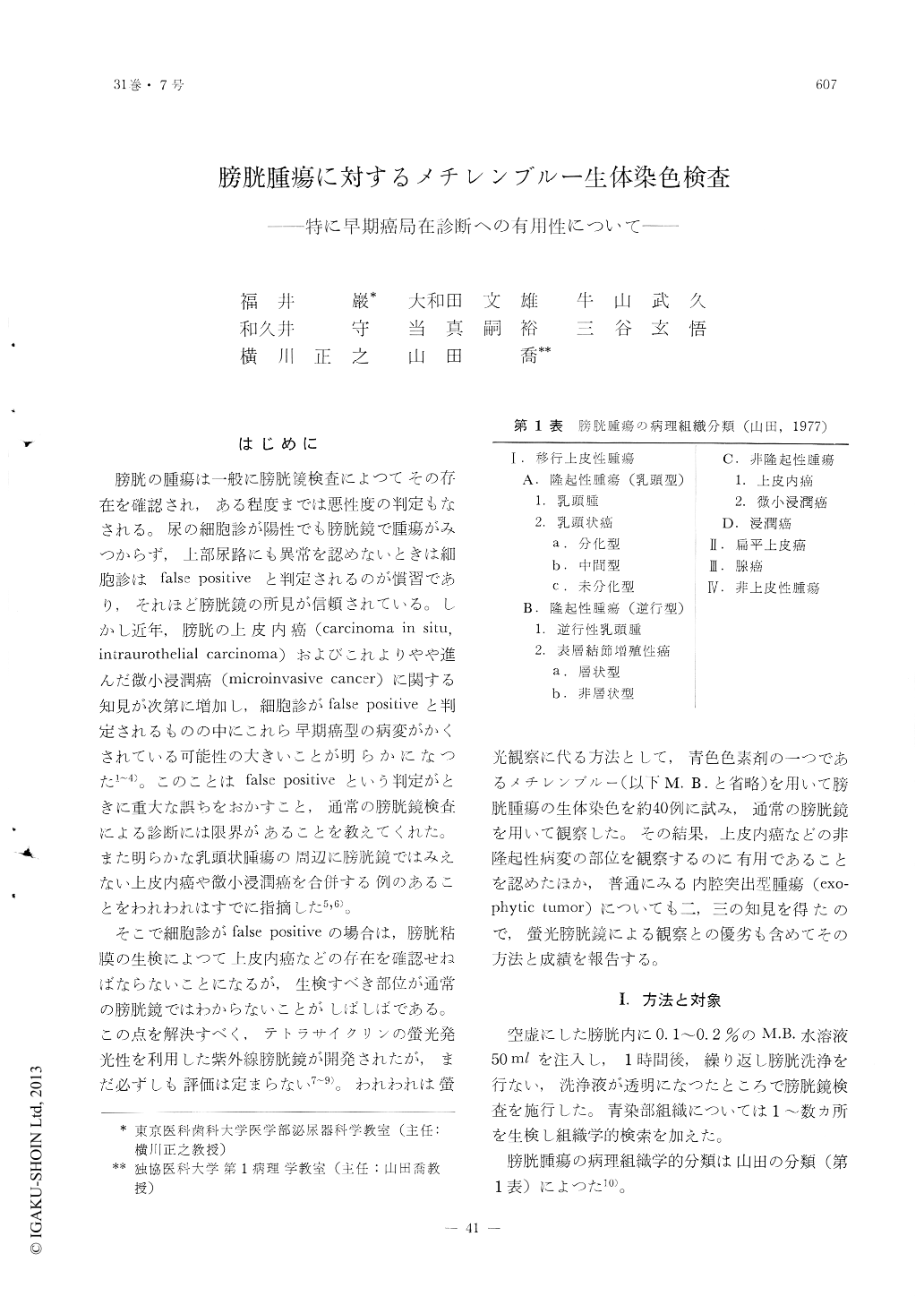Japanese
English
- 有料閲覧
- Abstract 文献概要
- 1ページ目 Look Inside
はじめに
膀胱の腫瘍は一般に膀胱鏡検査によつてその存在を確認され,ある程度までは悪性度の判定もなされる。尿の細胞診が陽性でも膀胱鏡で腫瘍がみつからず,上部尿路にも異常を認めないときは細胞診はfalse positiveと判定されるのが慣習であり,それほど膀胱鏡の所見が信頼されている。しかし近年,膀胱の上皮内癌(carcinoma in situ,intraurothelial carcinoma)およびこれよりやや進んだ微小浸潤癌(microinvasive cancer)に関する知見が次第に増加し,細胞診がfalse positiveと判定されるものの中にこれら早期癌型の病変がかくされている可能性の大きいことが明らかになつた1〜4)。このことはfalse positiveという判定がときに重大な誤ちをおかすこと,通常の膀胱鏡検査による診断には限界があることを教えてくれた。また明らかな乳頭状腫瘍の周辺に膀胱鏡ではみえない上皮内癌や微小浸潤癌を合併する例のあることをわれわれはすでに指摘した5,6)。
そこで細胞診がfalse positiveの場合は,膀胱粘膜の生検によつて上皮内癌などの存在を確認せねばならないことになるが,生検すべき部位が通常の膀胱鏡ではわからないことがしばしばである。この点を解決すべく,テトラサイクリンの螢光発光性を利用した紫外線膀胱鏡が開発されたが,まだ必ずしも評価は定まらない7〜9)。
The in vivo staining method with 0.1 to 0.2% methylene blue was applied to 41 cases to detect pathological or neoplastic changes of the urinary bladder, and the following results were obtained.
1) The papillary tumors were differently stained according to their histologic structure and size. The well differetiated and tiny ones were not stained or slightly stained spotty or patchy blue, but those larger than finger tip were stained almost diffusely. Either moderately or poorly differentiated tumors were stained more deeply than the well differentiated in many cases regardless of their size.

Copyright © 1977, Igaku-Shoin Ltd. All rights reserved.


